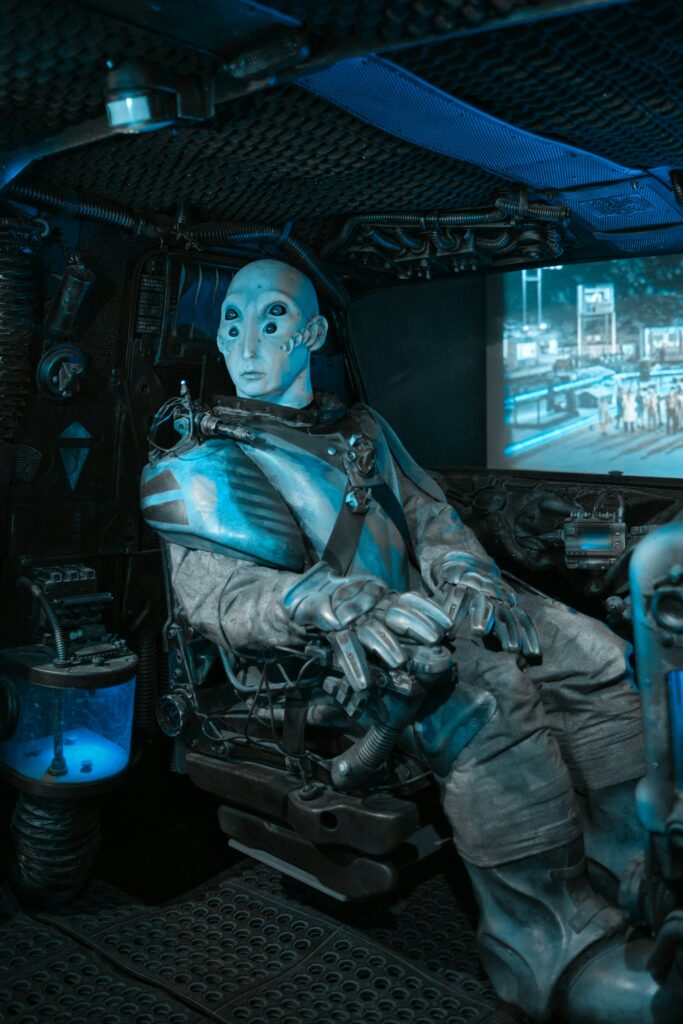Holographic Technology: A Reality That Exceeds the Realm of Science Fiction

Holographic Technology: A Reality That Exceeds the Realm of Science Fiction
For decades, holograms have been a mainstay of science fiction, appearing in future films as three-dimensional projections of people, objects, and even whole universes. Nevertheless, holographic technology is rapidly evolving in the modern era, and it is already beginning to transcend the world of fantasy and become a practical instrument with applications in a variety of fields, including entertainment, healthcare, education, and business, among others.
Holography has evolved from a mere visual gimmick to a revolutionary medium with the potential to revolutionize the way we engage with digital information as a result of advancements in laser optics, artificial intelligence, and display technologies.
What exactly is holographic technology?
Holograms, which are three-dimensional images, are created by the process of light beams interfering with one other. The light beams originate from a laser or similar source that produces coherent light. Holograms are different from virtual reality headsets or conventional 3D pictures in that they do not need the use of special glasses; holograms may be seen with the naked eye, which results in a more lifelike sensation of depth and presence.
The production of realistic and interactive three-dimensional projections is made possible with modern holography, which integrates optics with artificial intelligence (AI), machine learning, and augmented reality (AR).
How Holographic Technology Functions
Capturing the Image on Tape
It is possible to divide a laser beam into two separate beams, which are known as the reference beam and the object beam.
On a recording media, the reference beam is interfered with by the object beam, which is reflected off of the subject.
Rebuilding the Image
A three-dimensional picture is generated by the recording when it is lit by a laser or another light source that is adequate for the task. This is accomplished by the recreation of the light waves of the original item.
Integration with artificial intelligence (AI) and augmented reality (AR)
Holograms are made more interactive and sensitive to movements, speech, or changes in the surroundings when they are enhanced with artificial intelligence (AI).
1. Applications of Holographic Technology 1. Entertainment and Media
Concerts that are very realistic have been made possible by holograms, which have made it possible for renowned artists to take the stage once more. In addition, they make it possible to create immersive narratives in movies and video games.
2. Training and Education
By providing students with opportunities to engage with holographic representations of the solar system, the human body, or historical sites, learning is made more interesting for them.
3. Medical Care
Holography is used by physicians for a variety of purposes, including surgical planning, three-dimensional medical imaging, and teaching. Prior to performing surgical operations, surgeons have the ability to see organs or bones in three dimensions.
4. Business and Communication
Holographic meetings provide participants with the ability to appear in three dimensions, which leads to improvements in distant cooperation and presentations.
5. Marketing and Retail
In order to provide customers with a better experience, brands are making use of holograms for product presentations, interactive advertisements, and virtual fitting rooms.
6. National Security and Defense
Holography is a technology that offers improved capabilities for battlefield visualization, mapping, and strategic planning.
Advantages of Using Holographic Technology
Experience Immersive 3D: Provides the illusion of depth and presence while eliminating the need for headgear.
- Learning that is interactive enhances participation in educational and training programs.
- Improved Visualization: Provides assistance to experts working in areas such as medicine and engineering.
- Global Connectivity: Enhances the feeling of immersion in distant collaborations.
- Marketing that is innovative: Uses interactive displays to attract the attention of customers.
Difficulties That Come with Holographic Technology
High Costs: The development and deployment of holographic systems continues to be a costly undertaking.
- Technical complexity: demands accurate optics, great computer power, and a dependable infrastructure.
- Restricted accessibility: At the moment, it is only available to specific sectors and occasions.
- Bandwidth Demands: High-speed networks such as 5G are necessary for communication in real-time holograms.
- Scalability Issues: Solutions that are both user-friendly and inexpensive will be required for widespread adoption.
The Future of Holography
With ongoing breakthroughs in the fields of optics, artificial intelligence, and networking, the future of holographic technology seems to be quite bright. Among the most important trends are the following:
- Communication using holograms: Three-dimensional holograms that are the size of a real person for use in corporate meetings, educational settings, and entertainment.
- Interactions Improved by Artificial Intelligence: Holographic images that react to human motion and voice in real time.
- Integration with 5G and 6G: Seamless holographic streaming is made possible by faster networks.
- Applications for Everyday Use: Holographic displays in smartphones, smart glasses, and public settings
Holographic Metaverse: The creation of completely immersive digital environments via the integration of augmented reality (AR), virtual reality (VR), and holography.
Holographic technology has progressed beyond the realm of science fiction fantasy and is now on its way to becoming a viable and transformational tool for communication, education, healing, and entertainment. Although issues like as scalability and cost still exist, the tremendous breakthroughs being made in networking, optics, and artificial intelligence are speeding up the pace of innovation.
Over the next several years, holography has the potential to completely change the way that humans interact with digital information, making it more difficult to distinguish between the real world and the virtual world. The future of holograms is nearer than we realize.







